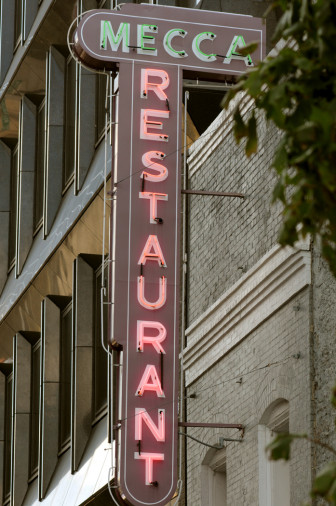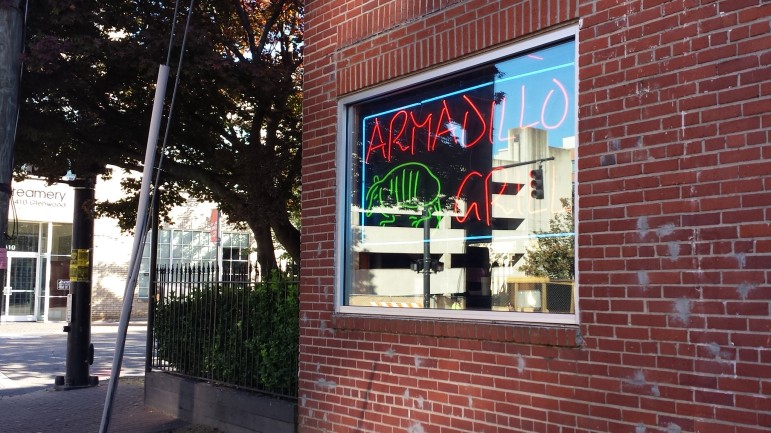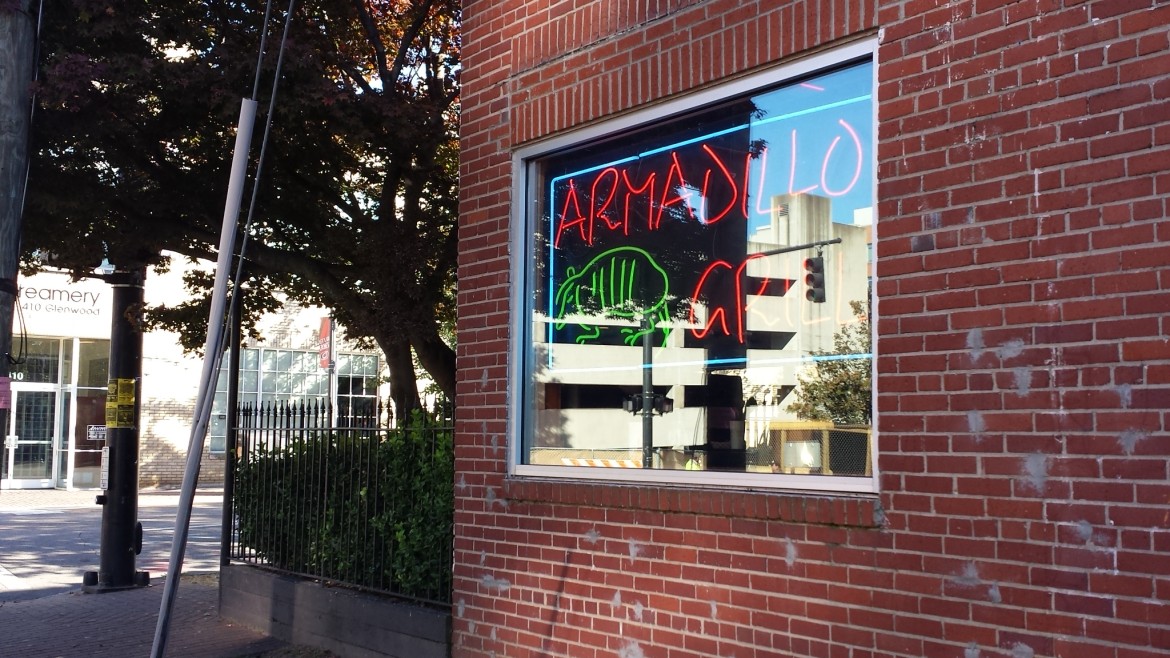Some business owners and City Councilors are lining up on different sides of the fence when it comes to regulating Raleigh’s window signs, which could lead to changes for area business owners.
The issue came up recently when a resident complained about a television-type window sign in a business on Glenwood South.
Raleigh City Council members are setting up a new task force to look at the current ordinance on window signs and make recommendations on how those rules should change.
Currently there are two codes that businesses in Raleigh follow when it comes to promotional signage: the “old code” and the newer City of Raleigh Unified Development Ordinance.
The UDO regulates window signs, requiring all signage not take up more than 30 percent of the total window space. It also regulates the area nearest to head height, requiring all signs within four to seven feet from the ground not cover more than 5 percent of the total window area. Any changes would be incorporated into the UDO.

Karen Tam / Raleigh Public Record
The Mecca restaurant sign downtown.
In March, members of the Raleigh Planning Commission began considering a text change to treat all window signs as promotional signs, something that Raleigh has not regulated in the past. Whether window signs would count toward total sign allowance or as a percentage of the window area was not determined.
Some business owners have already rezoned their property under the new UDO, but unless an owner has rezoned property since September, that business will fall under the old code, which does not regulate window signage. The new UDO could take two years or more before it is fully implemented.
A Call for Change
If local business owners have a word on the matter, however, increased regulations might not be on the way at all. Many owners believe that instead of increasing regulations, Raleigh should actually rewrite signage code to allow more flexibility.
“This is broader than window signs,” said Greater Raleigh Merchants Association Vice President Jeff Tippet, who opposes new regulations. “We don’t believe this is the time to make minor revisions. Rather, we feel this is a unique opportunity to create sign governance that better reflects what Raleigh is today and supports the growth of small business.”
Pam Blondin of Deco Raleigh, a downtown gift shop, opposes regulating window signage.
“It strikes me as a freedom of expression issue. If what is inside my window is subject to an ordinance, do I really have the freedom to conduct my business?” Blondin said. “I can’t afford the advertising that chains or larger stores can purchase. My windows are my promotional vehicle, and they are precisely why I pay the rent to be where I am.”
Many businesses are also asking for a redesign of the process to obtain a sign permit.
“Business owners are upset with the process and how long it takes,” City Council Member Bonner Gaylord told the Record. “They say it takes more time to get a sign permit in the city of Raleigh than it does to get an ABC permit to sell alcohol.”
Not everyone shares the view that regulations should be lessened.
“The intent of our ordinances aren’t to punish businesses but to make the environment such that businesses and our community strive,” said City Councilor Thomas Crowder, an architect.
On one hand, allowing businesses to display anything they desire in windows increases clutter, potentially making areas less attractive as well as decreasing law enforcement’s visibility into businesses. On the other, placing restrictions on window signage limits a business’s freedom and ability to creatively advertise within their own stores.
“There’s a phrase ‘you can’t see the forest for the trees,’ well, in this case, you can’t see the individual trees for the forest,” Crowder said.
If regulations of window signs is approved, Crowder said most of the violations would be found along the Capital Boulevard and Newbern Avenue corridors.
“Citizens don’t want Raleigh to look like Capital Boulevard, so why should we emulate Capital Boulevard?” he said.

Staff / Raleigh Public Record
An interior sign just off Glenwood Avenue.
Task Force to Explore Options
The task force will likely be a 10-person committee, appointed by the Council, that will analyze the issue for 45 days and report a recommendation back to Council.
Recommendations for creating the committee were expected to be presented on April 15, but have been delayed until the May 6 City Council meeting. Crowder said the delay was due to a clerical error when the nomination form was not formulated and distributed to members on time. According to Assistant Planning Administrator Eric Hodge, some members of the committee may be assembled from an earlier special-event signage task force.
If City Council forms the committee on May 6 as planned, a proposed solution could be on the table by June 20.
“The planning committee will have to vote on the recommendation and send it back to city council. Then a public hearing will likely follow for people to speak out,” said Crowder. “It will take some time to go through the process.”
Signage code will not affect all businesses. Those that don’t face a public street, such as those that are inwardly focused into a shopping area like North Hills, will not be regulated. Those inside a mall are also exempt from the code.
The proposed text change also addresses signs on vehicles. Under this proposal, parked vehicles will no longer be able to serve as signs in front of a business. Although vehicles will still be allowed to have promotional signs, they may not be allowed to park in certain areas.
